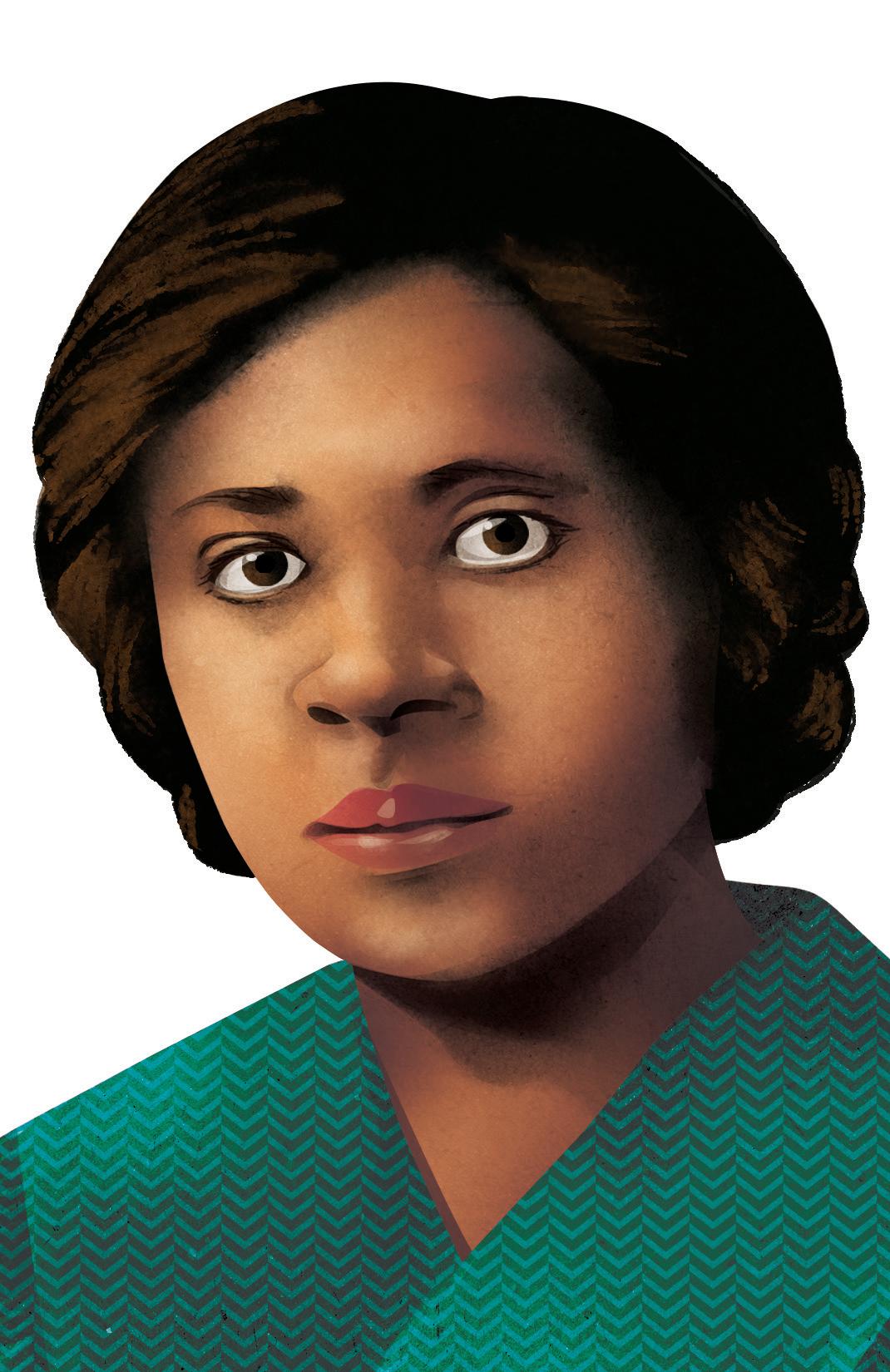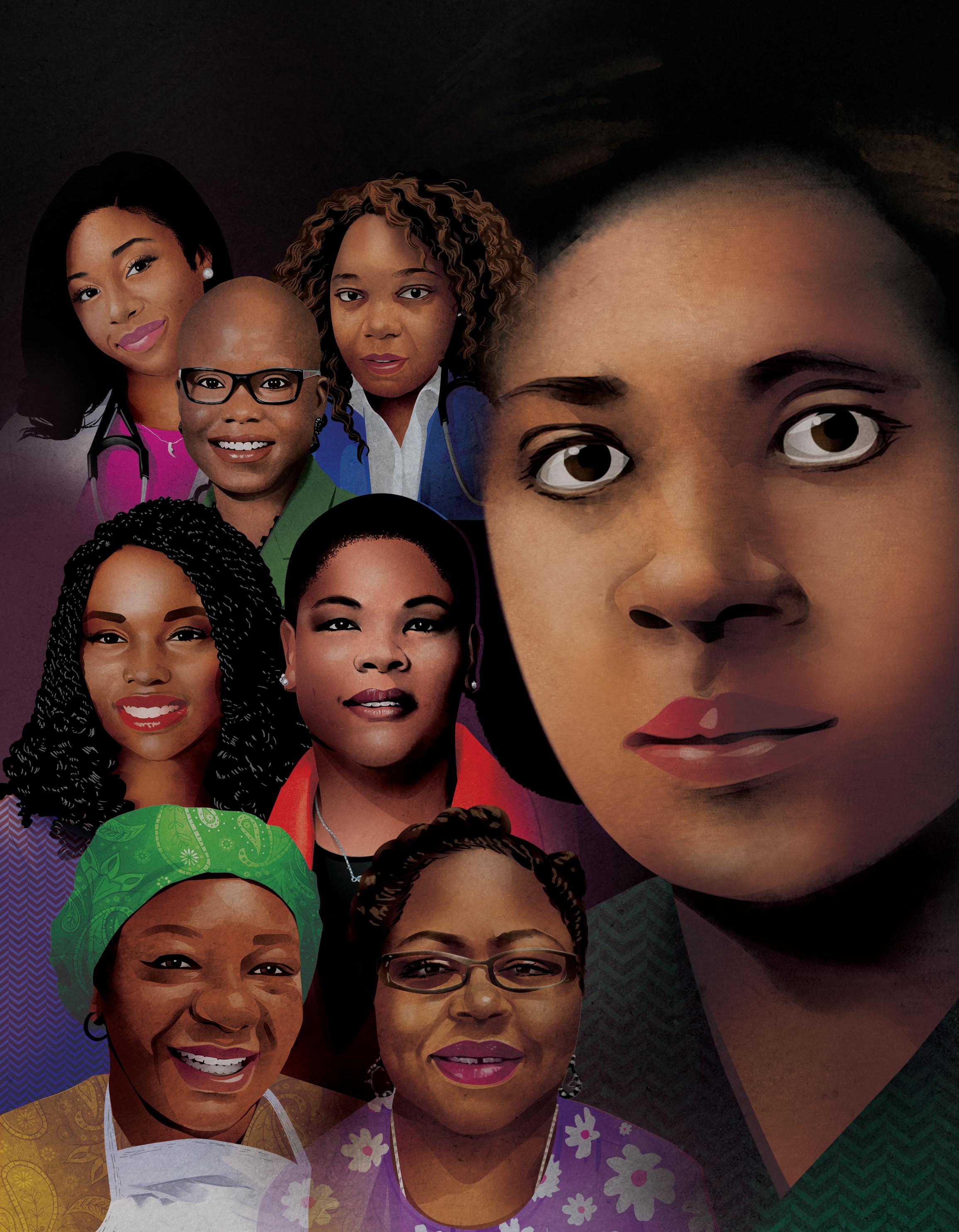
16 minute read
Standing on Her Shoulders: Celebrating Meta L. Christy, DO, and African American Alumnae Trailblazers
STANDING ON HER SHOULDERS
CELEBRATING META L. CHRISTY, DO, AND AFRICAN AMERICAN ALUMNAE TRAILBLAZERS
Vignettes as told to Janice Fisher
There is at once great wisdom and humility in acknowledging that we all stand on the shoulders of those who have gone before us.
In the vignettes that follow, seven African American alumnae share their experiences—personal and professional. They are courageous, determined and empowered women. And they are among those who proudly stand on Dr. Meta Christy’s shoulders . . .

LISA M. HARRIS, DO ’07, FAAFP
Medical Student Site Director, Fort Belvoir Community Hospital; Assistant Professor, Family Medicine, Uniformed Services University of the Health Sciences, Bethesda, Maryland
“I was over twenty years old before I saw my first Black female physician. I often call myself a statistical anomaly. . . . When I think of my parents—where they came from, what was offered to them—I could not have predicted my presence as a faculty member at a medical school, teaching residents, doing family medicine. I certainly believe in divine intervention and that medicine and teaching is my calling, but it’s grounded with grit, hard work, dedication, and allyship. . . . In Army JROTC, my instructor was a retired colonel. I had decided I wanted to be an EMT—the job would pay the bills. But he pushed me. He said, ‘That’s not enough. You need to strive higher. You have more potential.’ And that conversation and the time he spent with me, that changed my trajectory. . . . I decided to attend Florida A&M University, an HBCU, and was awarded an Army ROTC Scholarship. This was the only time in my life I was a majority. HBCUs’ existence is pivotal to the development of Black professionals. . . . At PCOM, a mentor to most of us was Leonard Johnson [DO ’64], also a graduate of Florida A&M. He held our feet to the fire; he expected greatness. . . . You’re taught as a Black person that the system is the system. You’re always going to have to work twice as hard to get half the credit—doesn’t matter whether you’re tired, whether your intrinsic worth or value feels diminished. I experienced a fair amount of burnout when it came to leadership in clinical roles. . . . Microaggressions and macroaggressions are stress mediators. When you get stressed, the cortisol level rises, and can affect your behaviors and performance. Underrepresented minorities [URM] experience chronic micro- and macroaggressions; they may never return to baseline. I agree with the thesis that this allostatic load leads to physician burnout for URM. The increased allostatic load can look like empathy fatigue, diminished educational or professional performance, etc. . . . Race can be the elephant in the room. ‘I don’t see race’ to me means you don’t see me. And we can’t have a conversation about it. . . . Most recently my work has addressed underrepresentation in medicine, through crosscultural mentorship. How do you mentor someone? How do you have conversations that feel uncomfortable? It’s really evaluating yourself and saying, ‘What are the things in my life that shaped my opinions, my beliefs, my behaviors?’ This is what’s called a cultural autobiography. When you have these conversations in a nonthreatening environment, all these things start to open up. . . . I’m a unicorn, but also I’m a beacon, so someone else doesn’t have to wait until they’re twenty to see a doctor who looks like them.”
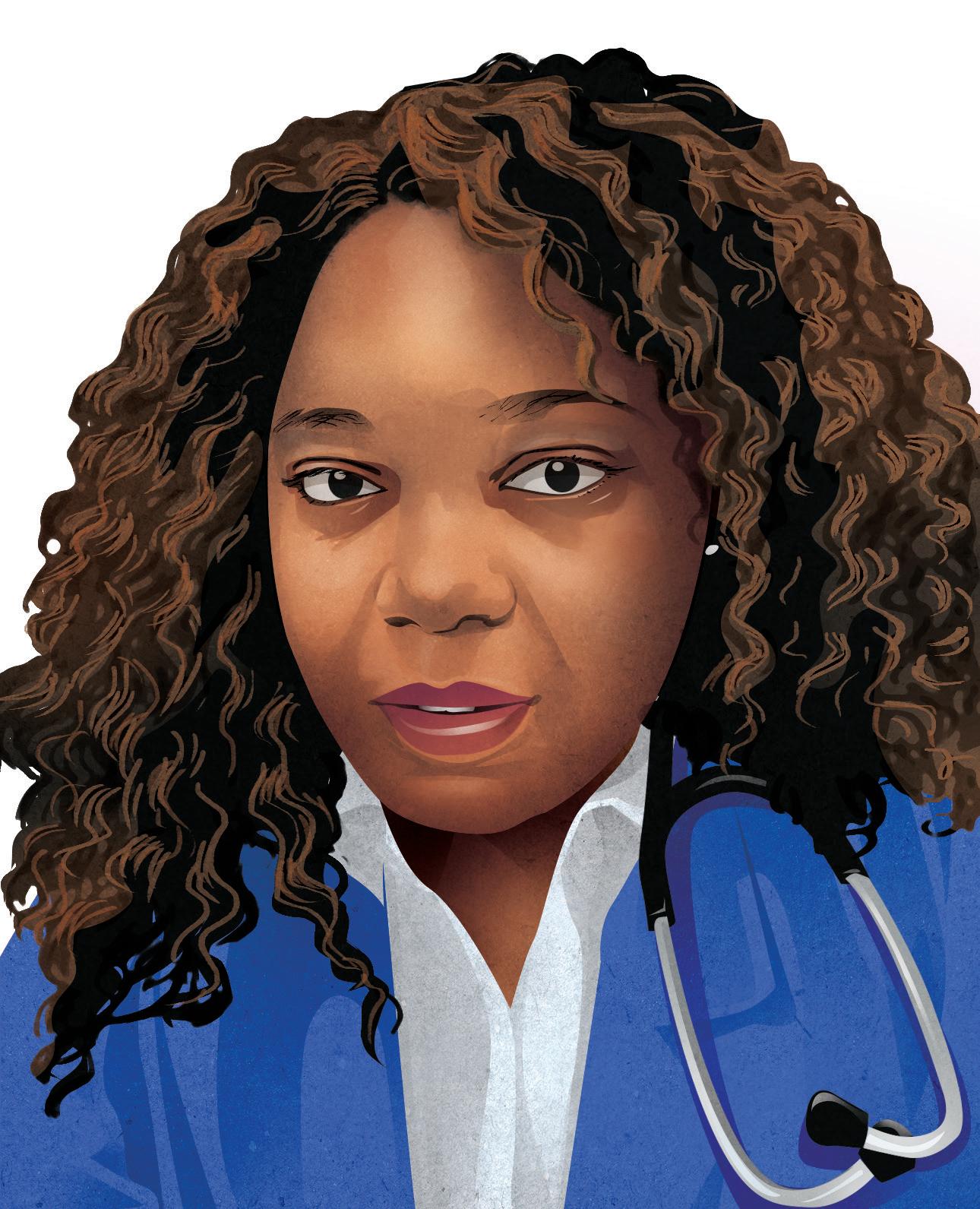
Family Medicine/Urgent Care Specialist, Greater Atlanta, Georgia
“Frequently, I see at least one Black patient who says to me, ‘I don’t want to embarrass you, but I just feel really proud to see you.’ And that makes me feel happy. . . . I do have experience with microaggressions. My badge says ‘Dr.’ in big capital letters. But when someone wants to call me by my first name, I just address it: ‘I prefer to be called Dr. Houston, and I’ll address you as Mr. So and So.’ There’s no easy way to deal with it when someone calls you ‘girl.’ It’s something that you get used to—maybe desensitized to. . . . Things that I’ve gone through in my own life have given me a sense of being humble. I come from a small town in Louisiana that was one of the last strongholds against desegregation, with a clear divide between the haves and have-nots. I see patients dealing with similar financial circumstances and health issues that my own family members have been through. So I definitely have a sense of empathy and understanding for their situations. . . . Watching my grandfather struggle with illness, I became fascinated with all things medical. Why did people have to suffer and die from Alzheimer’s like my grandfather did, and how could they be treated and possibly cured? I dreamed of being the first in my family to leave our small town, the first to get a college degree. After college, I worked with the National Institutes of Health as a microbiologist. I decided to pursue an advanced degree in biology and ultimately completed a master’s degree. . . . I had pictured medical school as a storm, but it was more like a Category 4 hurricane. That first year was the most difficult of my life. But I began to excel, to persevere, and to thrive. . . . I’m interested in the education and mentoring of other medical residents and other future physicians. I’ll tell them, ‘Be confident in yourself and your training and your past; let that be a positive; and don’t let any situation make you feel inferior.’ . . . You know, it’s easy to make a diagnosis, but it’s harder to change the mind of a patient, to have difficult discussions with a patient. . . . There just aren’t enough hours or years in medical school to teach you everything you need to know about interacting with patients. You just have to get out there and do it.”
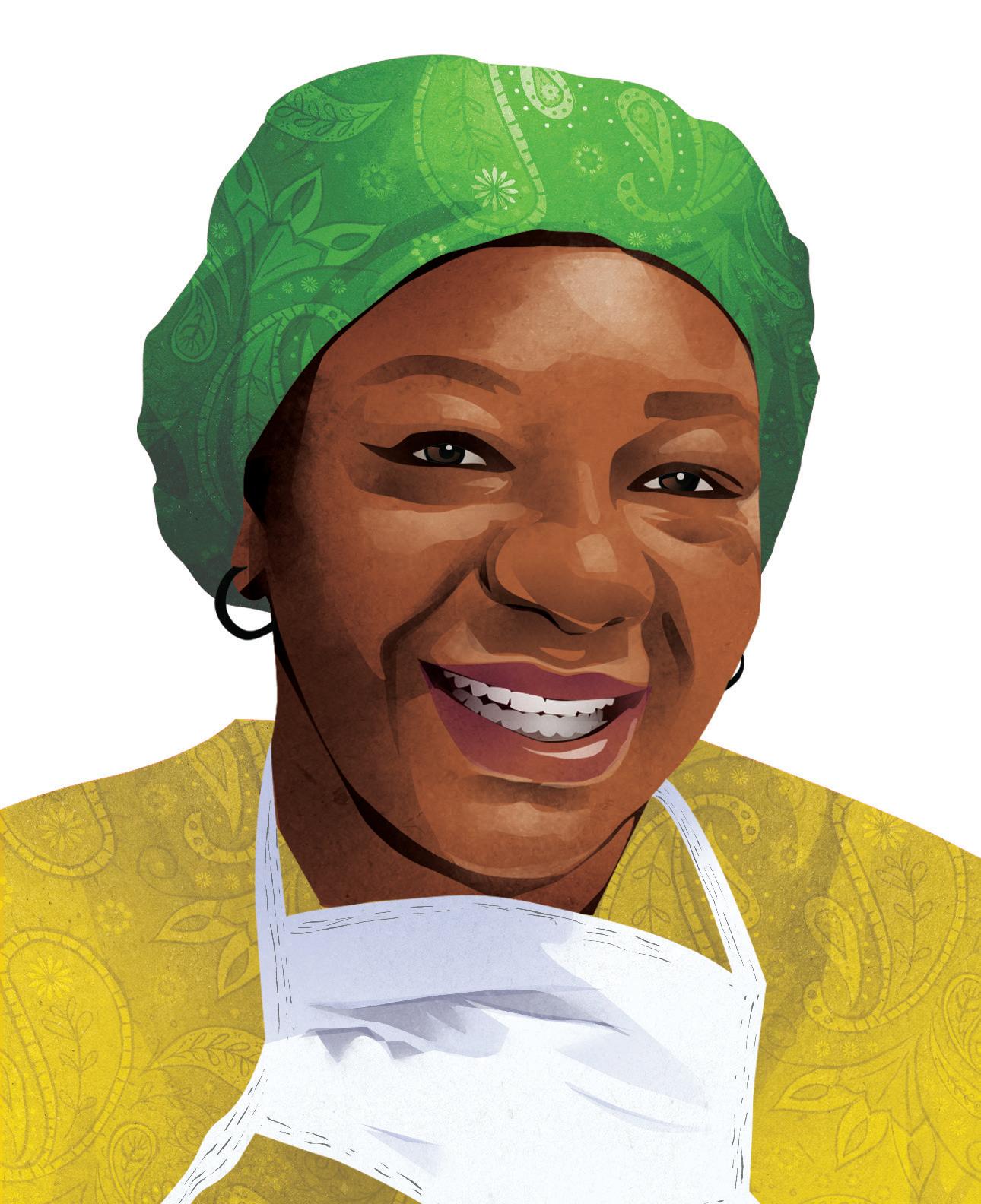
CHAVONE DANTRELL MOMON-NELSON, DO/MBA ’05
Obstetrician/Gynecologist, UPMC Pinnacle, Carlisle, Pennsylvania
“Twenty years ago, when I started medical school, it was very evident that the numbers of Black women in medicine were not reflective of our US population. But now, we are in a place where I feel proud to say I’m one of those two percent. Now we celebrate one another. . . . I grew up in Southwestern Pennsylvania, and I expected to go to one of the HBCUs in Virginia. And then I got a letter from Prairie View A&M University, a small school in Texas, addressed to ‘Dear Future Doctor Momon.’ I thought, who the heck sent this letter? The chair of Prairie View’s biology department handpicked his students for a pre-medical program. What sealed the deal for me was seeing pictures of graduating seniors—a whole bunch of people that looked like me— with their letters of acceptance into professional school or graduate schools. . . . That was four years of being in a kind of utopian society where everybody looks like you. I learned to be comfortable in my own skin. . . . My PCOM classmates used to say, ‘How are all these people from Prairie View ending up here?’ PCOM was the medical school of choice. I knew somebody from Prairie View in the class before me. When people came to interview, you’d say, ‘Oh, you can stay with me.’ . . . The minority alumni always made themselves present, made us feel valued and supported. Coming out of my utopian society, without that support, I would have struggled more. . . . At the end of my third year at PCOM I got my MBA. It was good for me, being a first-generation college student, to understand that there is business in medicine, and that it doesn’t necessarily have to be a bad thing. If I had not had that experience, I might have thought, ‘I’m going to walk in there, in my starched white coat, and I’m going to heal the world.’ . . . I’m active on social media, on Instagram; I want to help put out credible information and also be a representation of that two percent and to depict the real life of a physician. . . . Women often have men making decisions for us, and we have men making decisions for our patients. My patients like to see me on social media. They say, ‘Oh, wow, I’m glad that you talked about that today.’ . . . I’m currently the chair of the department here in Carlisle, and I hold other administrative positions, but I don’t want to leave my clinical duties. I still love patient care, and I want to do that as long as I can. My motto is, ‘It’s for my patients.’”
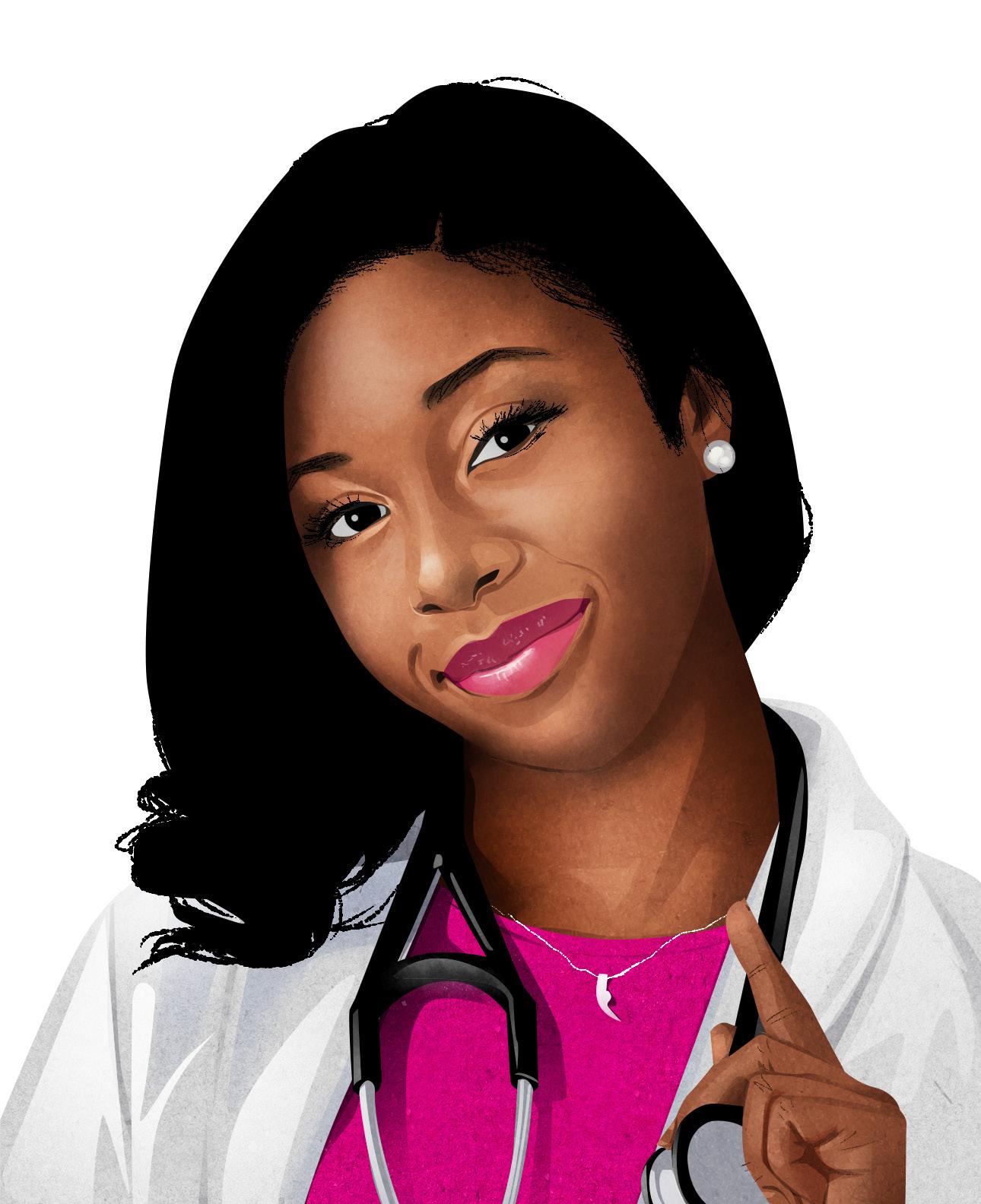
ASHLEY ROXANNE PETERSON, DO ’19 (PCOM GEORGIA)
Family Medicine Resident, Morehouse School of Medicine, Atlanta, Georgia
“When I walk into a room, especially if I’m not wearing makeup, most people think I’m about 15 years old. But I’ve dealt with that my whole life [Dr. Peterson started college at age 15 and medical school at age 19]. Even when I introduce myself as Dr. Peterson and they ask, ‘Where is the doctor?’ it has become natural to say, ‘It’s me, I’m the doctor.’ And then I tell them, ‘I get that a lot,’ because I want them to know their judgments are not uncommon, and I move the visit along. . . . Unfortunately, microaggressions are a common part of my career. A comment might be made because I’m a woman. I’m mistaken for a nurse at least once a week. (I want to be very clear: There’s nothing wrong with being a nurse!) But my boyfriend is also a young physician, and he’s rarely if ever called a nurse. . . . And then, I’m a Black woman whose white coat says ‘osteopathic doctor,’ which I am proud of—but the osteopathic distinction is less common where I practice. . . . Thankfully, I have had 26 years to learn that other people’s comments are a reflection of them, not me. One day I hope young Black women DO doctors are so common, no one blinks when they enter a room. . . . When I’ve told colleagues about the racism or discrimination I’ve experienced, some wouldn’t otherwise have known, as I have come to believe a lot of Americans think racism is over. . . . The Black Lives Matter movement has made people address many issues—whether they agree or don’t. I’m pleased that we’re all having more uncomfortable discussions about our prejudices. . . . People always ask how they can be an ally. Everything starts at home. You don’t have to lead a parade or feel like you need to be a superhero. The next time you’re having a conversation and a questionable comment is made, ask that person, ‘Why do you think that?’ Your friends and family trust you, and you may be the only person challenging them to think differently. I myself am learning more about different populations during this time, and I hope it makes me a better family medicine doctor. . . . To me, the beauty of family medicine is that you’re trained to see every age group. So someone can tell their aunt, ‘When you have your baby, you can see my family doctor.’ That network of trust means everything in medicine, especially as more people seek information from unverified sources and place less trust in medical professionals. A strong patient–physician relationship, with shared decision making, can favorably influence many health outcomes. I think that’s a big theme for 2020/2021: working together for everyone’s best.”
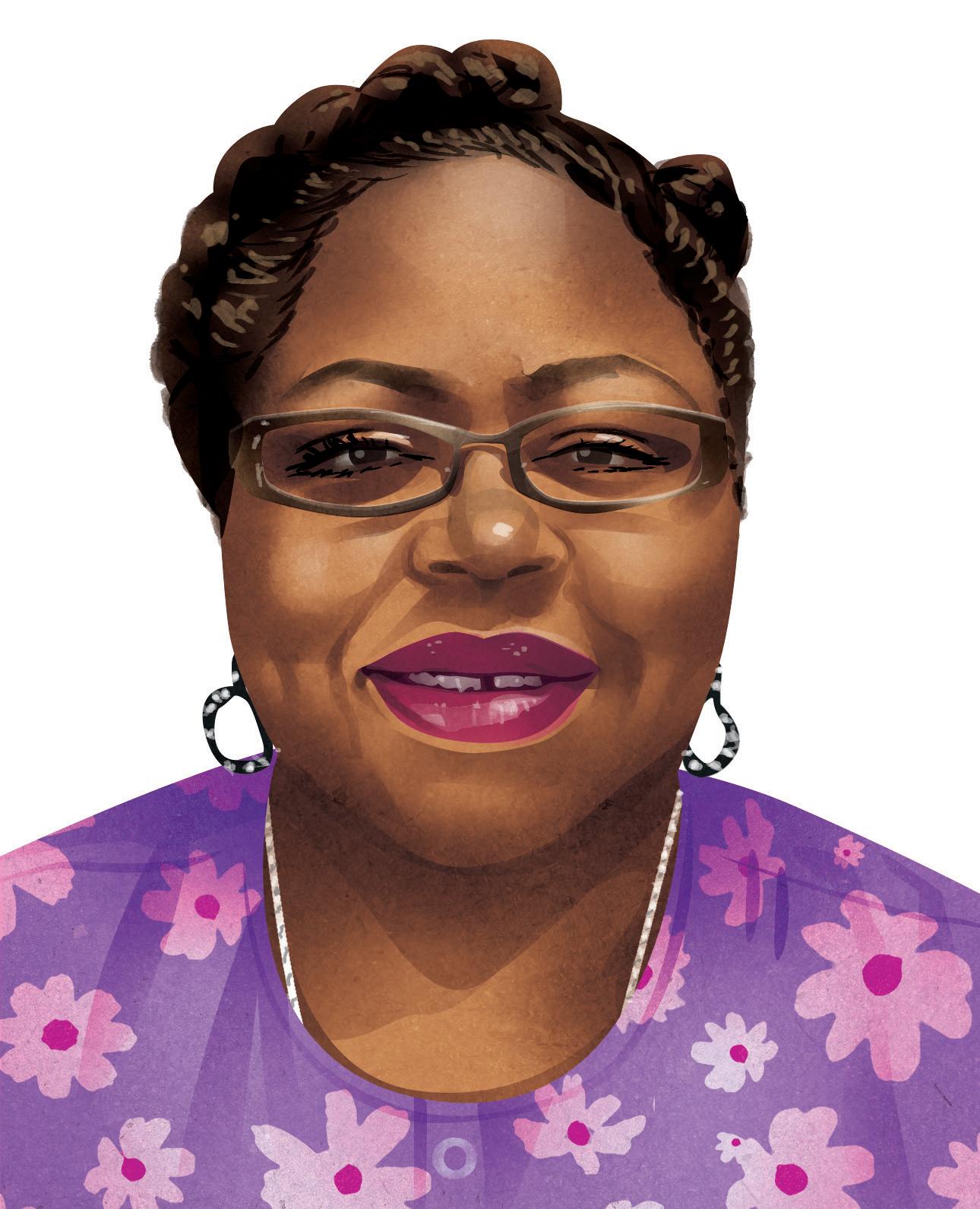
VANESSA A. RAGLAND, DO ’84
Family Physician, Family Medical Associates Inc., Haleyville, Alabama
“I’m a native of Birmingham, and I went to Spelman College, an all-female HBCU, in Atlanta. Moving from the Deep South to Philadelphia to attend PCOM was a culture shock. I loved having new experiences, meeting new people, eating new foods. . . . My elective rotations helped prepare me for my future as a physician. I interned at Saginaw Osteopathic Hospital in Michigan, and then spent the next four years in public health in Marianna, Arkansas. . . . I moved to Haleyville, a predominantly white community, in 1989. Less than one percent of the population is Afro-American. When the hospital hired a white male DO, I learned he was paid $38,000 more than me. . . . Early on, a white male patient refused to be seen when he realized I was Black physician. Another white male patient said, ‘I told my ol’ doc that if there was an ‘n’ doctor in town, I’d go see that ‘n’ instead of waiting for him. So he gave me your location.’ Trying to persuade the local schools to teach about National Black History Month or about Afro-American contributions to the making of America was futile. . . . In 1998, my older son died at the age of 13. Coincidentally, every year around the anniversary of his death, the school would call to inform me that my remaining son’s braided hair was ‘too distracting.’ I decided to send him to a more diverse school in Georgia. . . . I am the original founder of our company. We now have two office locations with two DOs, two MDs, four NPs, and about 50 support staff. Our patients are white, and few are Hispanic. . . . I always sit down to listen to what my patients have to say, and I don’t take notes while they are talking. I want them to know they have my full attention. . . . There have been so many more positives than negatives, like the elderly white gentleman who said, ‘I’ve watched you fight and claw your way up to the top. I respect you and I love you,’ or the toddler who licked my hand because he thought I was chocolate! There are a lot of ‘I love yous’ said in my office, and they’re genuine. My patients love me and I love them. . . . Thirty-one years ago, I was just passing through. After all these years, I guess I’m still just passing through. . . . More important than the color of the physician is the quality of care.”

NICOLE THOMPSON, MS/PSY ’10, EDS ’13
Founder of GOAT Educators, Philadelphia, Pennsylvania
“Young people who have been affected by trauma need understanding, and then they need love. And love is without judgment—meeting them where they are. We hold them to certain standards and want them to behave in a specific way. But especially for Black and brown children who may not be used to acting that way, and who then come to school and are punished for it—they feel defeated and hopeless, and they’re being retraumatized in those schools, in essence. . . . Reverse the Adverse is traumainformed care training for educators and mental health professionals who work with urban students affected by adverse childhood experiences. The foundation of traumainformed work is for educators to reflect on their own biases, their own lived experiences and how those could be affecting management of the entire classroom. . . . We all have bias; I take educators through that journey of self-discovery. Then I teach them about trauma and how certain behaviors manifest in the classroom. . . . Teachers often come up to me after training and tell me how impactful it was, because now they’ve taken the time to digest and understand things they may have known on a surface level. They appreciate the simple strategies for turning around different behaviors, so they can move on with the instruction. . . . One way to deescalate is a pattern disrupt. You want to come to a student in a calm manner, no matter what—say the child is throwing chairs—and you never want to ask them what’s going on mid-incident. You give them time to calm down and let them know that once this is over, they can come to you. You’re letting them know you’re there when they need you. Now they have an adult that’s 100 percent attuned to what they’re talking about and what’s bothering them. . . . The problem is always that we want to fix things now. But this is a different way of teaching, a perspective change. Because if you lead with love and relationships and prioritize that from day one, a lot of the problems and issues we see will never occur, or won’t escalate as much. Research shows that compliance increases when you have good relationships. . . . Because of my own personal history with trauma, being able to help the students heals my younger self. I’m able to go back and understand—through their perspective, through their lens, their lives—why things happened to me.”
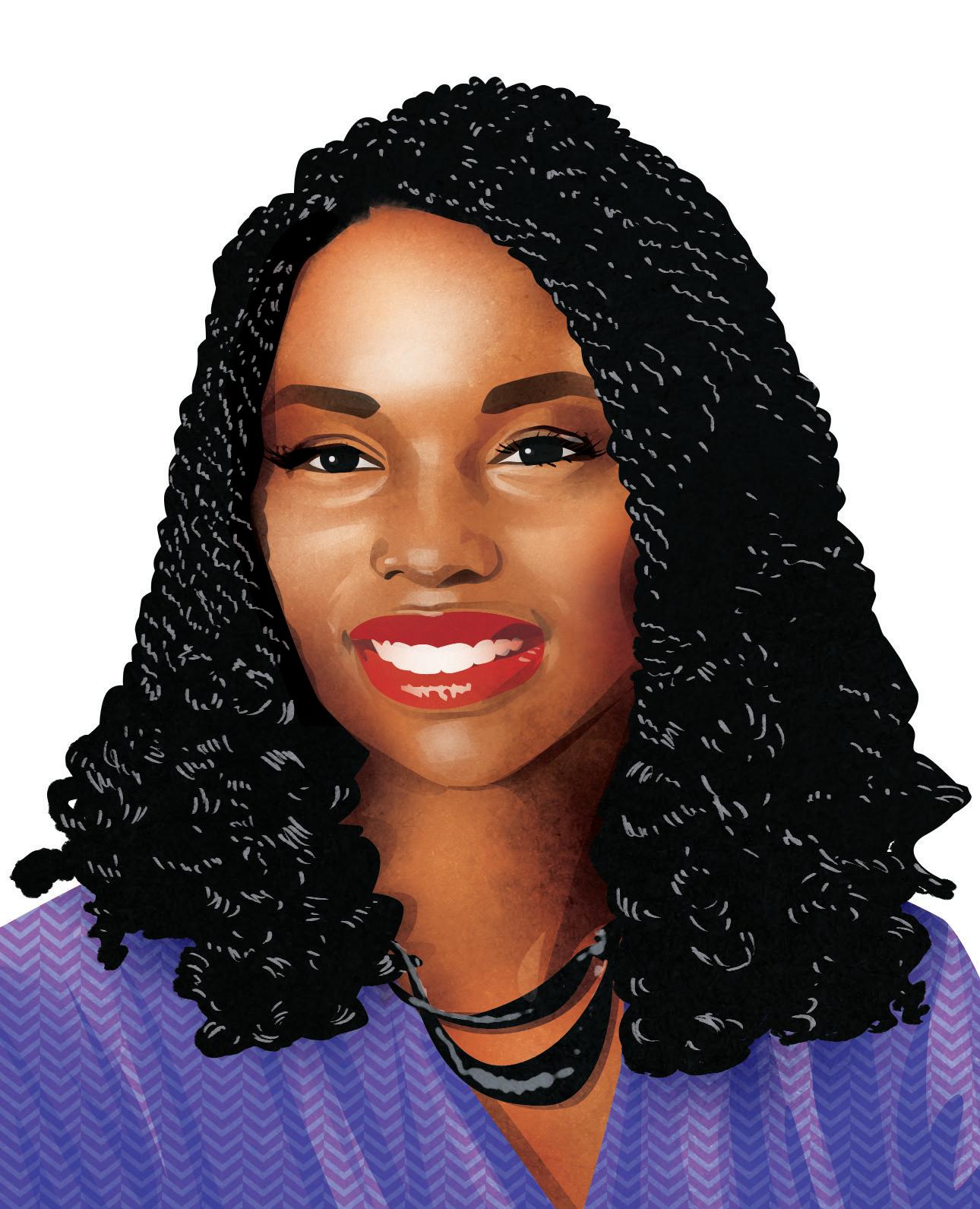
EBONY D. WORTHAM, JD, EMPA CANDIDATE, MS/ODL ’11
Assistant District Attorney; Supervisor, Juvenile Unit, Philadelphia, Pennsylvania
“In Southwest Philadelphia, where I was born, we didn’t have a lot of structured activities. So we took a broomstick and played stickball. We would break windows, because we were playing in the middle of a residential street. That’s criminal mischief, by the way. That’s in my crimes code book. We put a milk crate on a telephone pole to make a basketball hoop. So the ball is out in the middle of the street, bouncing on the hoods of cars. Now we’re congregating near the corner; that’s failure to disperse. These crimes are all rooted in the conditions that exist naturally in disadvantaged communities. . . . When I was nine, my parents scraped together everything they had to move us 15 to 20 minutes away, to Mount Airy, and that entirely changed the trajectory of my life. That trajectory has also caused me to be a reformer, a change agent. . . . Mount Airy was more like a campus, sprawling with trees and grass and playgrounds. The expectations for kids were completely different. The conversations were around where we should be developmentally. And in the old neighborhood, the conversations were centered around survival. . . . There’s very little difference, if any, between the kids in these different neighborhoods—it’s just opportunity. It’s structure, resources, having a community that’s able to absorb adolescent behavior. The outcomes of your behaviors are going to be reflective of what’s available to you in your environment. . . . I’m trying to reform our juvenile justice system so that only the kids who really need to come into our system end up here. Most of them can be diverted away from the justice system, diverted to age-appropriate and child-appropriate structured activities so that they can continue to develop the competencies they need to become productive and caring young adults. . . . I’ve been doing a lot of work on the history of the juvenile justice system in this nation. When it started in 1899 in Chicago, its purpose was to focus on the needs of children, not their deeds. Given everything we know about adolescent brain development, we understand that these are not adults, they are kids. When you’re 40, you wouldn’t recognize who you were at 16 or 17. . . . I can bring my whole self to this work. I’m striving to become the prosecutor that kids deserve. That’s the tagline on my email. And it’s designed to raise the question: Do kids deserve prosecutors?”

